We live in an automotive world dominated by compact SUVs and there is none more popular than the Toyota RAV4. Selling half-a-million units a year, it’s one of the most popular vehicles in the U.S., but there’s another competitor that gains traction each year: the Subaru Forester. It just finished its best sales month ever, and Subaru is hoping to keep that momentum up with this all-new 2025 Forester. So, who wins in a 2025 Subaru Forester vs. 2024 Toyota RAV4 battle?
Pricing and Equipment
So, first off, let’s discuss pricing for these two family SUVs.
Starting with the popular RAV4, we have the sporty-yet-high-end XSE trim level. Toyota offers quite a few options and our tester checked almost all of those, making its total price $41,985, after destination.
RAV4 (Hybrid XSE AWD): $36,885 | Options: +$3,765 | Destination: $1,335 | Total: $41,985
Moving to the all-new Subie, you’ll find a very similar price point in the loaded Touring trim level. It comes standard with everything, and after destination, makes its grand total around $500 less than the RAV4.
Forester (Touring AWD): $39,995 | Options: +$0 | Destination: $1,395 | Total: $41,390
Exterior Design
Starting with the exteriors, you’ll see that both crossovers bring bold design to the table. For the all-new Subaru, they’ve stretched the grille out this year to increase the aggressiveness and both models finish it in gloss black. Now we won’t be awarding points based on design preferences, but for lighting we do have a difference. Both come with premium projector LED lighting, but only the Subaru also has adaptive abilities.
Additionally, it has LED fog lamps compared to the RAV4’s accent lighting strip.
Continuing to the sides, the Forester gains about an inch of length for the all-new generation, which makes it a couple inches longer than the RAV4. We’ll talk about how that translates to space later, but it’s only the RAV4 that offers a two-tone roof option for those who like that extra flare.
Length: 180.9-inches (RAV4) | 183.3-inches (Forester)
For wheels, you’ll find large contrast 19-inch alloy wheels on the Forester compared to the Toyota which maxes out at 18-inches on this trim.
Next up, we have the rears. You may have your own opinion regarding designs, but as far as features, you’ll find partially LED taillights, exposed exhaust outlets and window wipers. Only the RAV4 has dual exposed exhaust outlets, though, and only the Forester has LED reverse lighting.
If you’re looking to tow, the Hybrid RAV4 can move about 15% more weight at 1,750 lbs. vs. the Forester’s 1,500 lbs.
Towing: 1,750 lbs. (RAV4) | 1,500 lbs. (Forester)
Additional Features
Now moving on to some individual features, you’ll find nice mirrors on both. They have BSM, heating, and LED turn signals.
But family SUVs need to be safe, and one of the really nice things about these two is that all four of your major active safety features are included standard. Their warranties are also mostly the same as well, besides for the Toyota’s 2 years/25k miles of complimentary maintenance.
But Subaru has really upped the tech on the inside, so let’s get into that comparison.
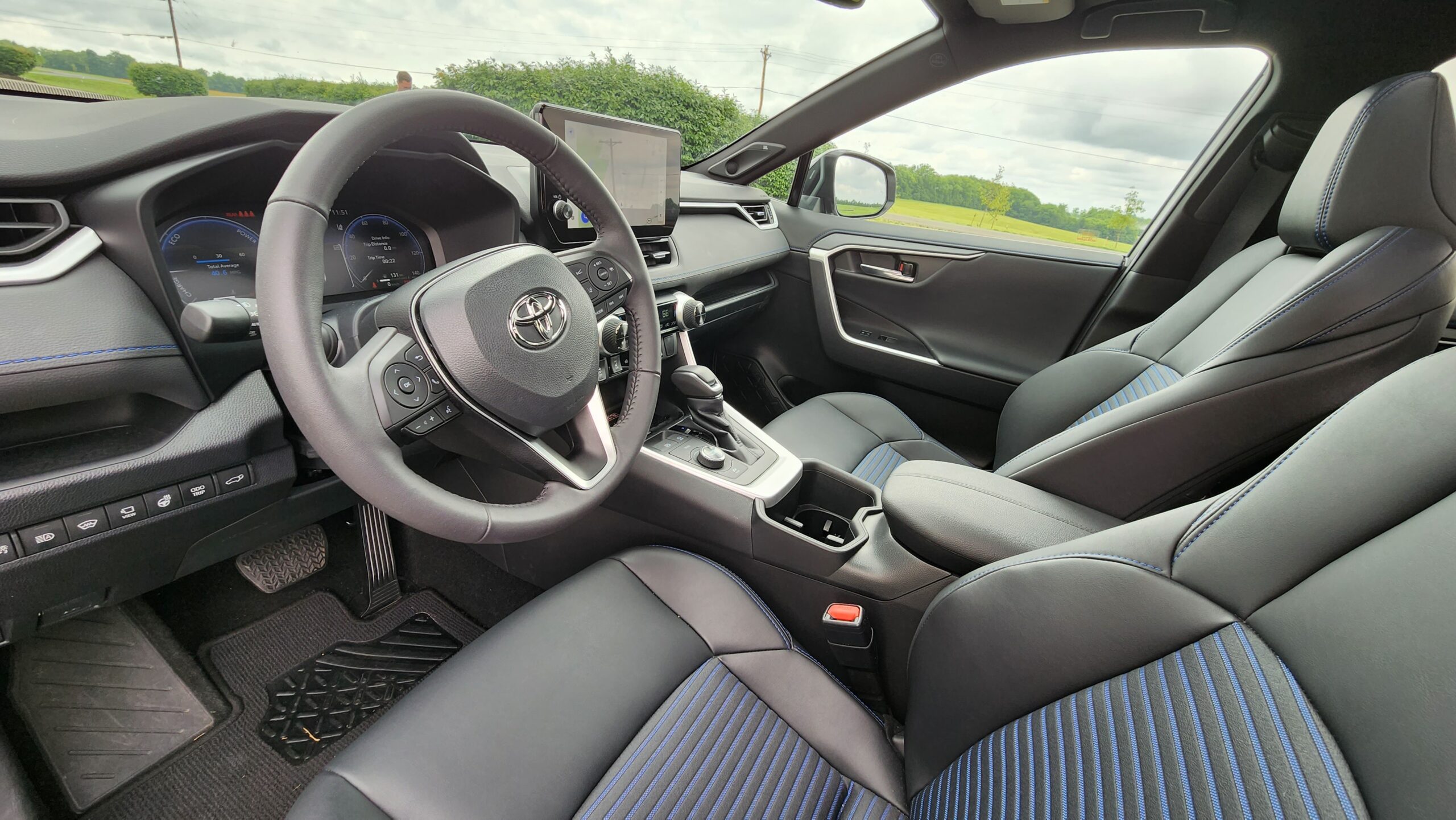
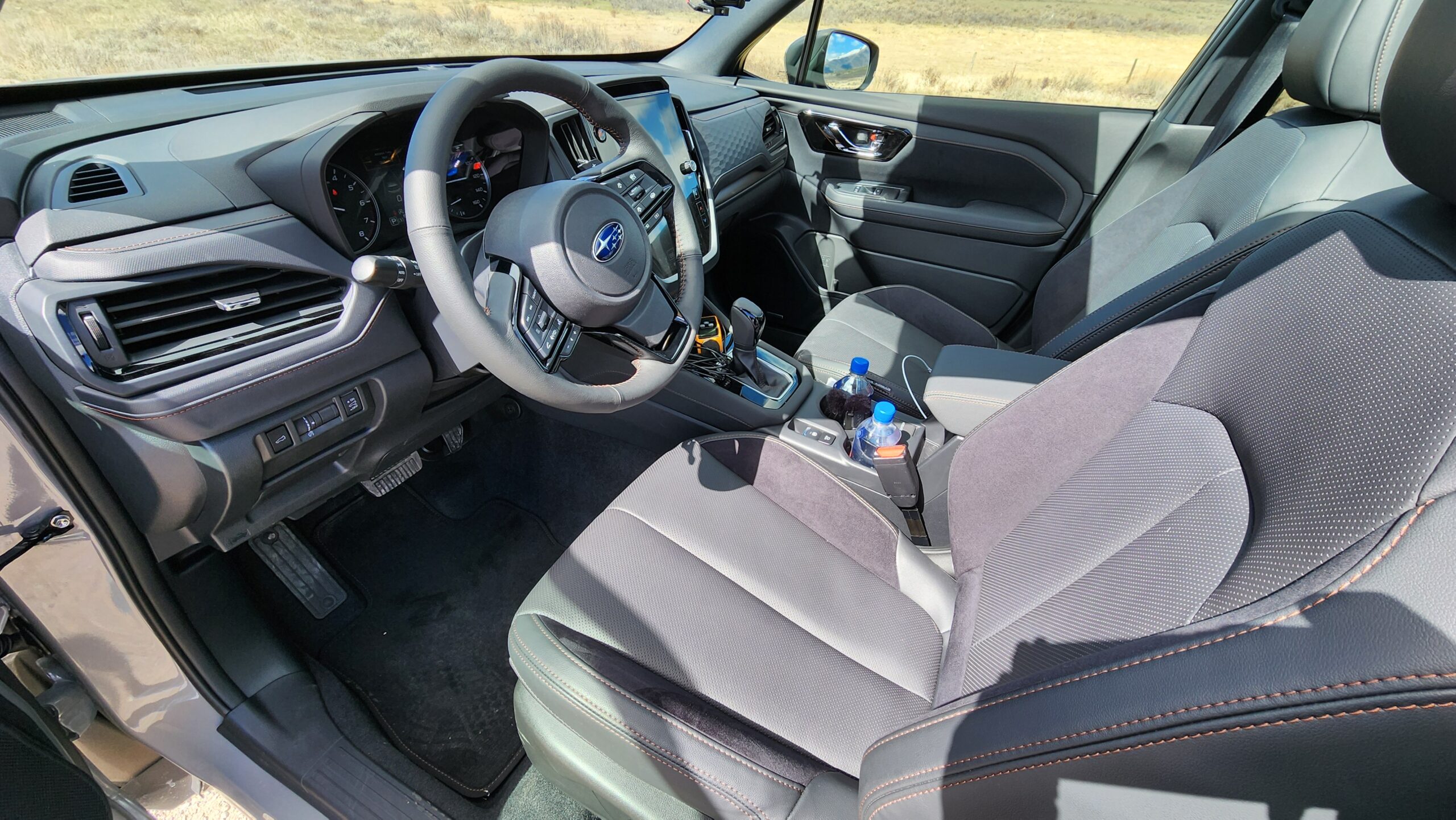
Interior Design
Approaching both SUVs, they have smart entry systems with nice key fobs. Remote start available via each brands app for free during the trial period.
Note: Toyota’s remote start can also be activated via the key fob during the trial period
Both have sensors behind the door handles to unlock and after opening the doors, you’re going to see spacious, and surprisingly nice cabins in their high trim levels.
Before we dig into the features, let’s start with the seats. The Toyota has a sporty black SofTex leatherette, while the Forester goes for a more premium real leather with Alcantara suede accents on the side.
That’s a more expensive material, and for seat adjustability, the Toyota has an 8-way power seat compared to the 10-way seat on the Subie.
It’s also the Subie that has the advantage with seat climate, as it now includes seat ventilation for this all-new model. That’s something that only the more expensive Limited RAV4 can get, and both SUVs have 2-person memory.
Now once inside the cabins, let’s check out the major point category of material quality. In this regard, both models have solid cabins with good materials. The Subaru has a durable feeling leatherette across the dash and where your knees rest. The Toyota has very similar materials, so we’ll call this area even.
After startup, you’ll see a big difference. Despite being all-new, Subaru still has the traditional gauge cluster design with a 4.2-inch display in the middle. The RAV4, meanwhile, has a full 12.3-inch digital cluster with good functionality and customizability.
Neither have the option of a head up display and moving back, they both have heated, leather wrapped steering wheels, along with rain sensing wipers as equipped.
Storage and Technology
Now it’s time to evaluate another major interior section: storage. This is a big deal for many families, and in this regard, the RAV4 pulls away with the lead. It has a larger center console, larger storage area in front of the shifter, and a passenger storage shelf. The Subaru isn’t bad per say, but the Toyota takes the point here.
Moving on, both have wireless phone chargers this year, and surprisingly, traditional shifters. They have easy operation, and when in reverse, you’ll see an a 360-degree camera on both – something new this year on the Forester.
For climate, both have dual-zone automatic setups with physical buttons for the main temperature adjustment. And for audio, both have their respective upgraded audio systems. That means on the Toyota has a JBL and the Subaru a Harmon Kardon system. Let’s take a listen.
While both have the same speaker count, it’s the Subaru that has fuller audio quality and richer sound.
Forester: 11-speakers Harmon Kardon
RAV4: 11-speaker 800-watt JBL Premium audio
People want a high level of technology in cars nowadays, so let’s move to the key element of displays. The RAV4 got a big upgrade last year to this 10.5-inch display, but not to be outdone, the all-new Forester adopts the large 11.7-inch display from other Subaru products this year. That means it has about 10% more screen real estate and as far as functionality, both have integrated navigation systems and wireless Apple CarPlay and Android Auto.
As we wrap up the front of the cabins, both have auto-dimming mirrors with HomeLink remotes, and the rear camera functionality if you flip the switch. Both claims to have panoramic moonroofs and have unique pros and cons. The RAV4’s is larger overall, but the Subaru’s opens wider to let more air in.
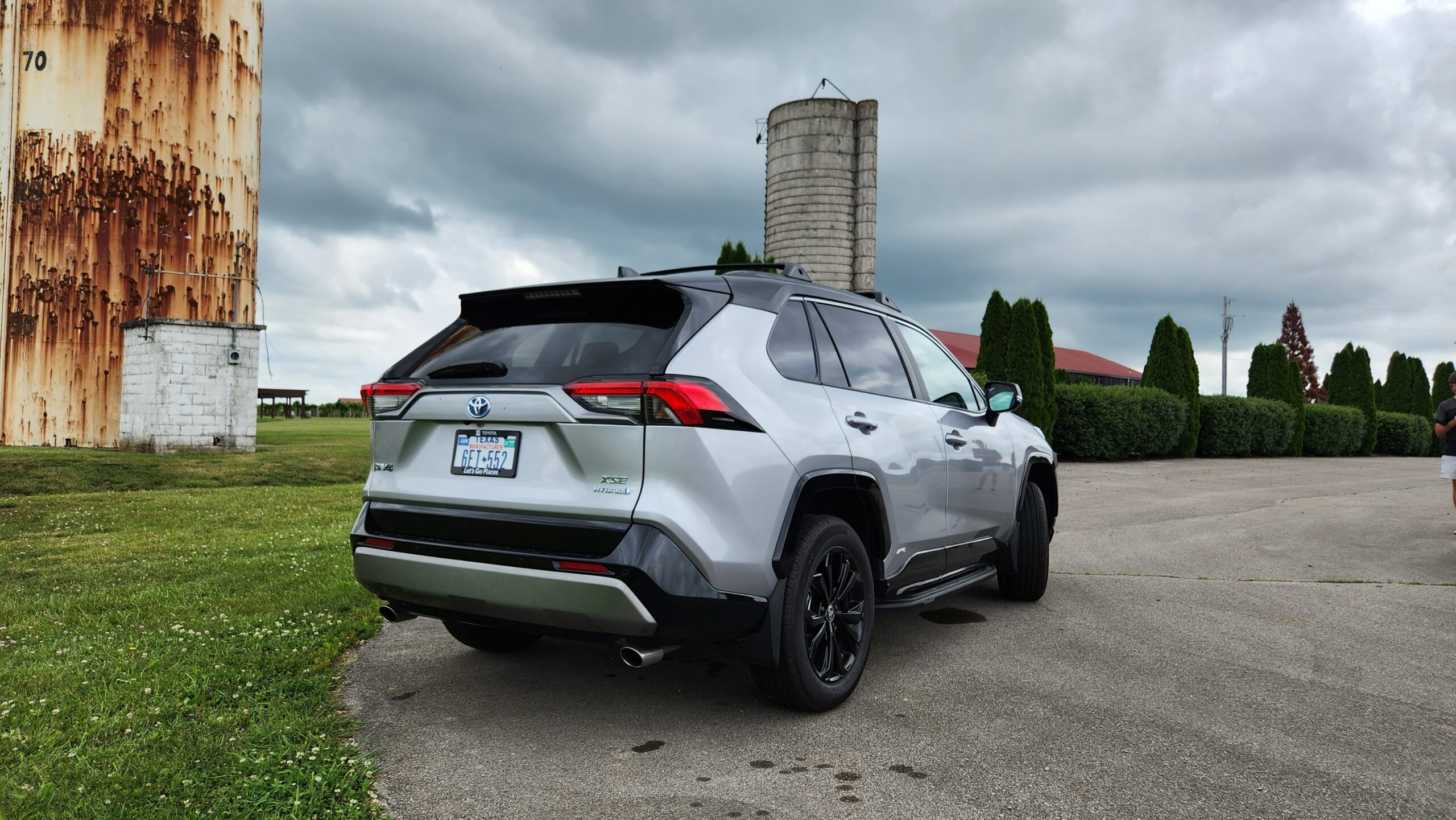
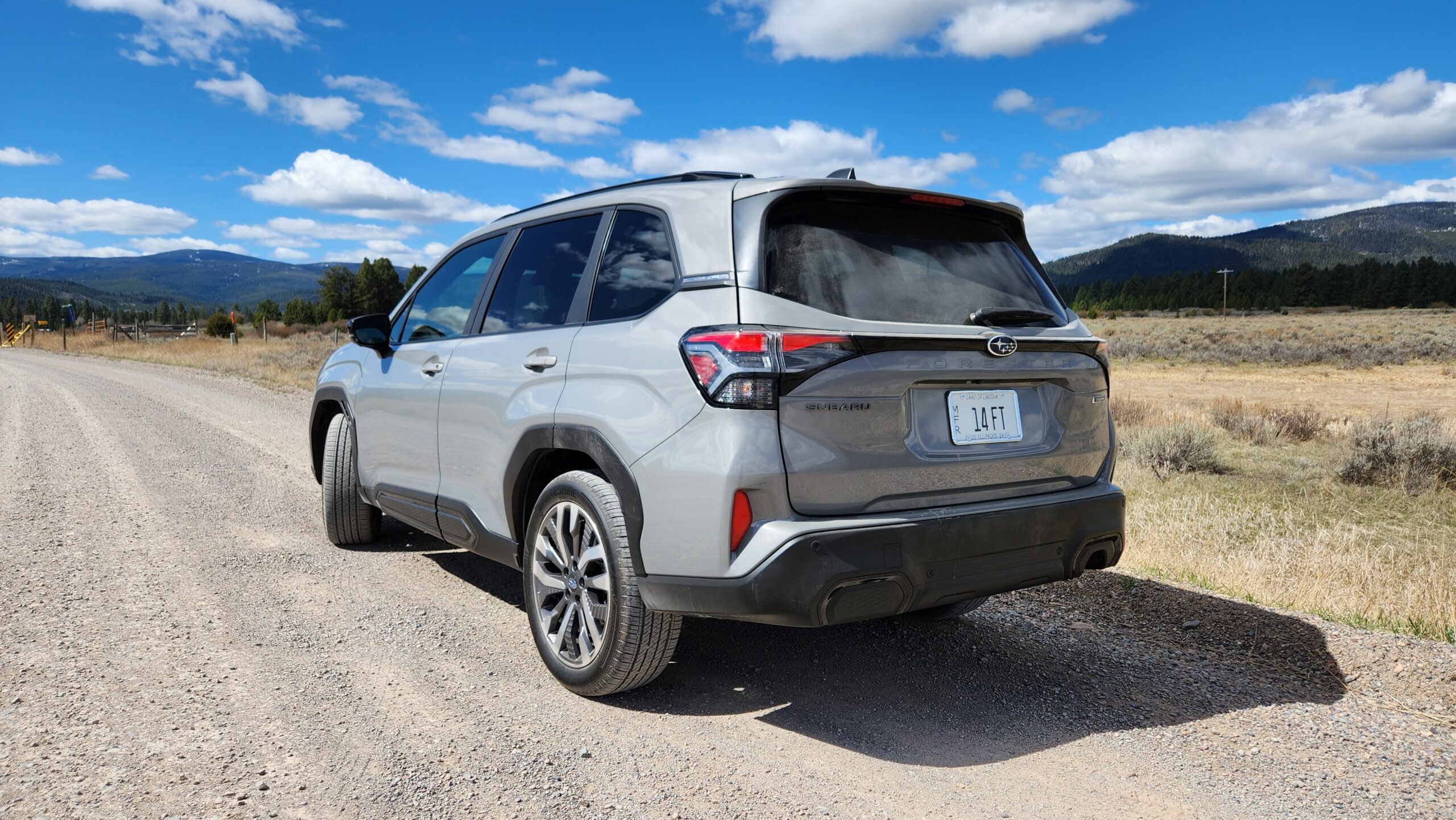
Rear Seats and Cargo
Like we’ve said multiple times at this point, these SUVs are commonly used for hauling families around. So how are the back seats? Well, both are going to have impressive amounts of space. The Forester comes in about 4% larger in terms of rear legroom, but that’s not quite at the 5% required to score a point. Headroom is nearly identical for both.
Forester: Legroom: 39.4 inches | Headroom: 39.6 inches
RAV4: 37.8 inches of legroom | 39.5-inches of headroom
Now that that’s out of the way, they also have quite a few features. Both give you USB ports and rear vents, but only the Forester Touring has heated rear seats. That’s something once again only on the more expensive RAV4 Limited.
Now let’s see how much stuff you can bring along with you for the journey. Both have power tailgates with hands-free ability, and once they open, you’ll find a large 31% advantage in the RAV4 behind the 2nd row of seats. Surprisingly, that advantage dissipates with the seats folded since you’ll get a nearly identical maximum capacity.
RAV4: Behind 2nd row: 37.6 cubic feet | Max: 69.8 cu.ft
Forester: Behind 2nd row: 27.5 cu. ft | Maximum: 69.1 cu. ft (w/ pano)
Both models have a spare tire, but it’s only the Subaru that includes switches to easily fold the 60/40 split folding seats.
This has certainly been a tight race so far, but now it’s time to take this fight out to the street!
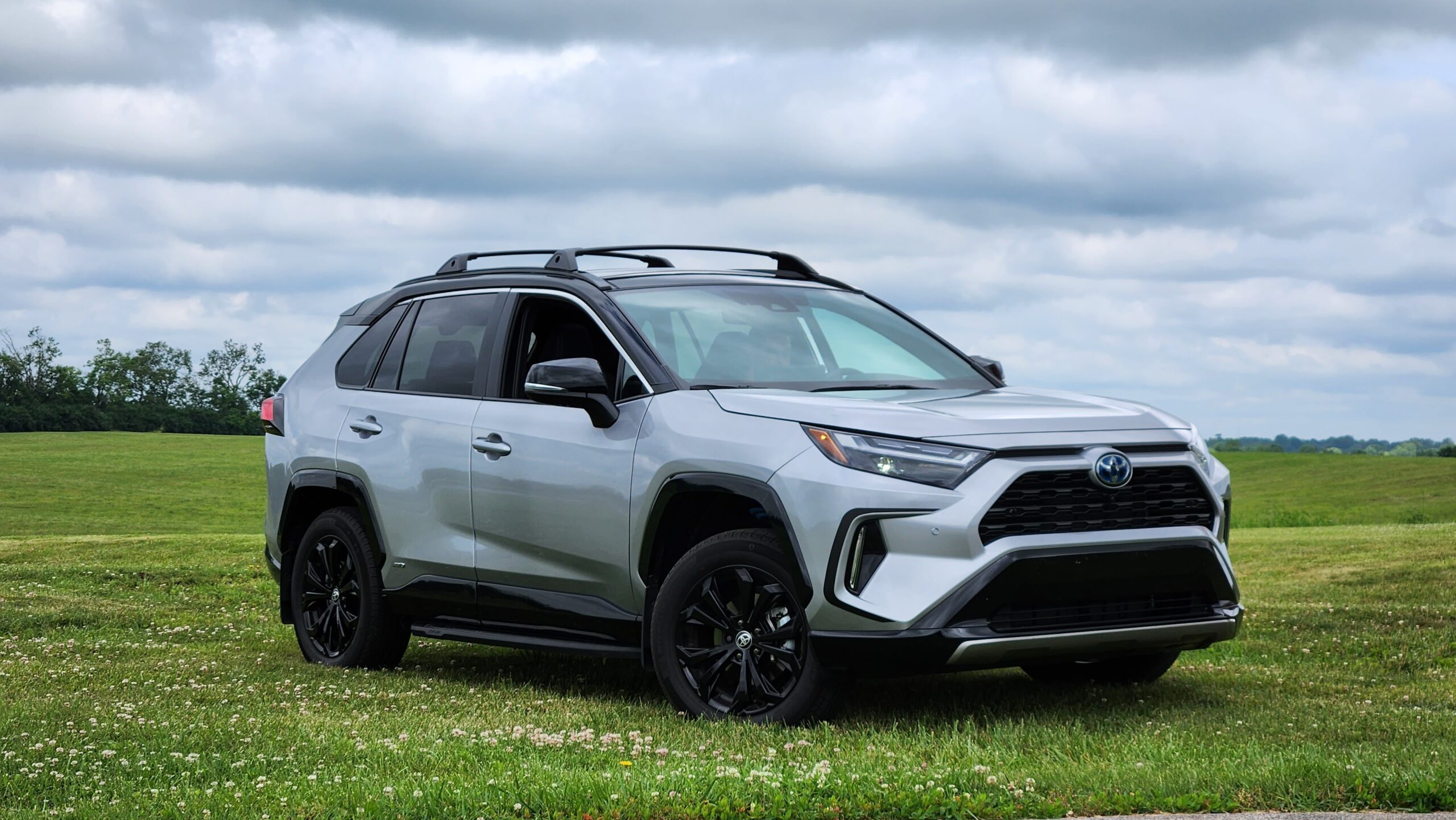
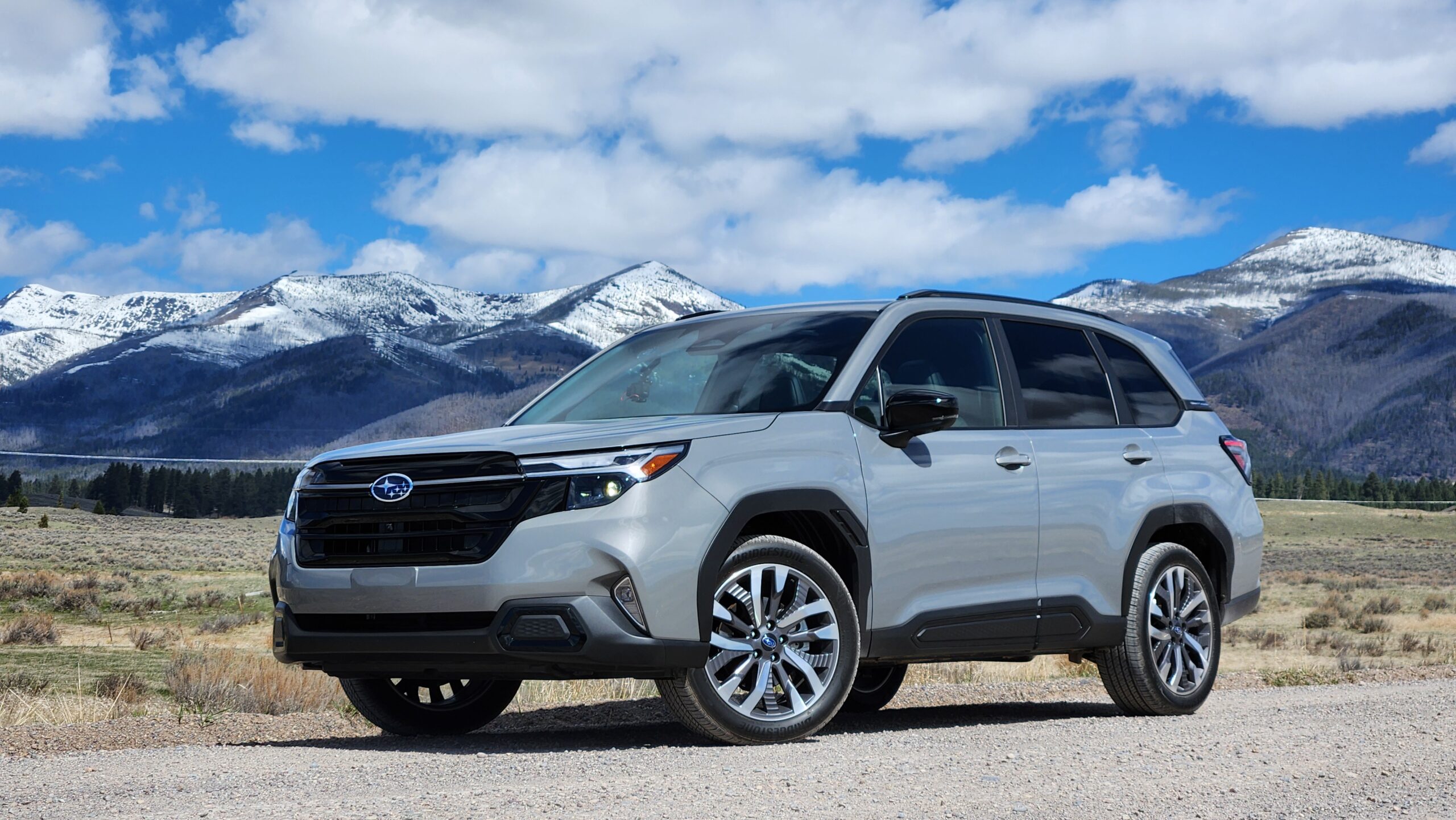
Powertrains
So, as you’ve seen up until this point, both Subaru and Toyota have distinct advantages and disadvantages and we see a big difference between the two under the hood. While the all-new Subaru Forester continues with its traditional 2.5L Boxer-4 for 2025, several RAV4 trims, including this XSE, are Hybrid-exclusive. While the Forester will have a Hybrid eventually it will not be available soon. Regardless of your preference on hybrid vs. pure gas, the RAV4 is significantly quicker when accelerating because of its additional 40 horsepower.
RAV4: 2.5L I-4 + Elec: 219 hp
Forester: 2.5L Boxer-4: 180 hp | 178 lb.ft
When it comes to transmissions, both are using versions of CVTs. They have similar performance but more importantly, let’s talk about off-road capability. Here, the Forester pulls ahead with greater ground clearance and while both have standard AWD, it’s only the Forester’s that is a full-time AWD setup vs. part-time. This is what has long given the Forester its reputation for adventuring.
Test Drive and Fuel Economy
Now let’s talk about an important part for any family SUV, the ride quality. In this area, both impress and have better-than-average ride quality and comfortable seats. The one thing I do want to point out is that the Forester’s big windows make for amazing visibility.
But that aside, how quiet are the cabins? Here at Car Confections, we take a sound level reading of every vehicle we test on our channel. Unfortunately, the Subaru’s was taken on a press event in Montana so it can’t be scored officially, but even then, the two SUVs came in within 1 dB of one another.
RAV4: 56.7 dB @ 55 MPH
Forester: 57.6 dB @ 55 MPH
Lastly, if fuel economy is front-of-mind to you then the RAV4 will make more sense. This hybrid system delivers phenomenal MPGs of 40 combined, while the traditional Forester is sitting at 29 MPG combined. That will definitely add up over the lifetime of owning the vehicle but do keep in mind the Forester is promising a hybrid likely in about a year from now.
RAV4: 41/38/40 MPG
Forester: 26/33/29 MPG
Resale and Reliability
In our reviews and comparisons, we are also adding in reliability and resale information to give you a better picture of the overall value beyond just the original MSRP.
Beginning with reliability, we developed the Combined Reliability Index, which takes into account several studies from trustworthy sources, and combines them in a way that gives a more realistic picture. Subaru ranks 12 slots above the industry average for all brands in reliability, while Toyota is the very top brand for reliability, 16 slots above average.
We also put Mason’s economics degree to work to develop a detailed Predicted Resale Value tool. After 5 years and 60,000 miles, both brands impress. Toyota has the 2nd highest predicted resale value of 64.5% and Subaru the third best at 63%.
Resale is obviously important because it determines how much money you get back, but we can’t forget about the price difference at the original purchase. The RAV4 costs $595 more than the Forester.
I want to emphasize that if money, reliability or resale value matter less to you personally, feel free to disregard these points. And if you’d like to check out all our data about reliability and resale values, as well as learn about our methodology, make sure to head to www.carconfections.com/resale and www.carconfections.com/reliability. Buying a car is a big decision, and this is a great place to compare all the makes you might be cross-shopping.
2025 Subaru Forester vs. 2024 Toyota RAV4 winner!
So, there you have it; that was a tight race, but let’s discuss who should be “your” winner…
Forester:
- Enhanced off-road capability
- More value: the $41K price point (vented seats, heated rear seats)
- Audio system & larger screen
RAV4:
- Hybrid powertrain experience (more powerful and better fuel economy)
- More stylish exterior options
- Storage in front of cabin
Now we want to know your opinions, so make sure to head to the comment section and let us know which one you would pick!
Thanks for joining us for another Car Confections Comparison! We’ll catch you next time as we sample the latest automotive delicacies!

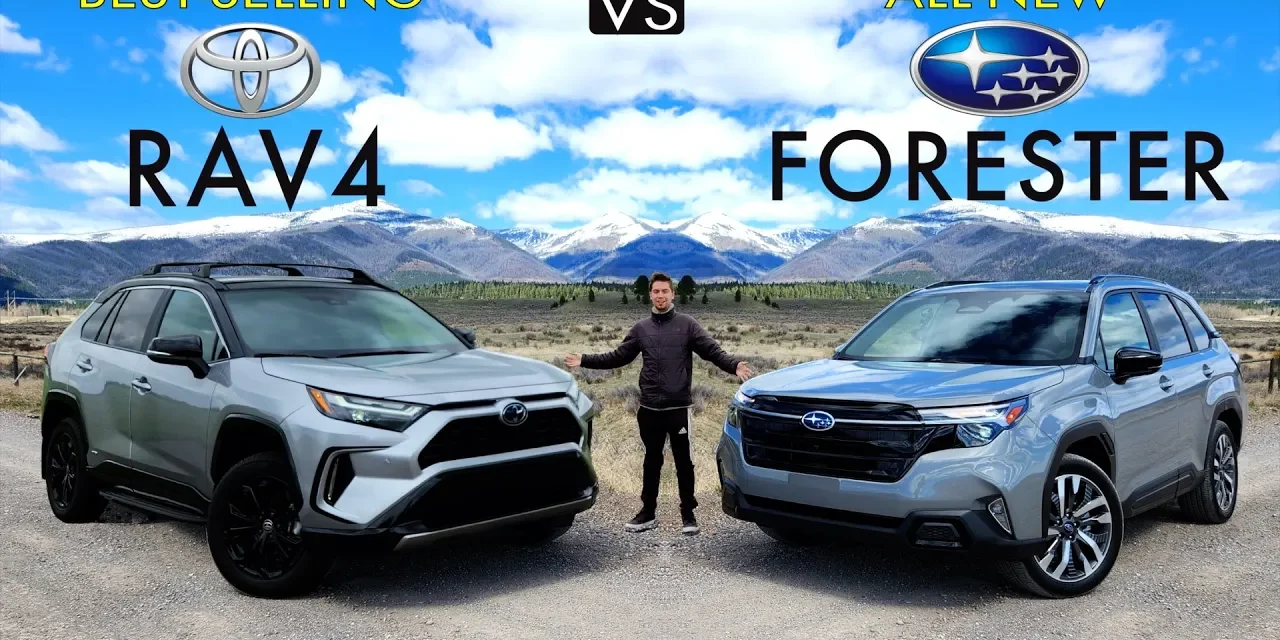
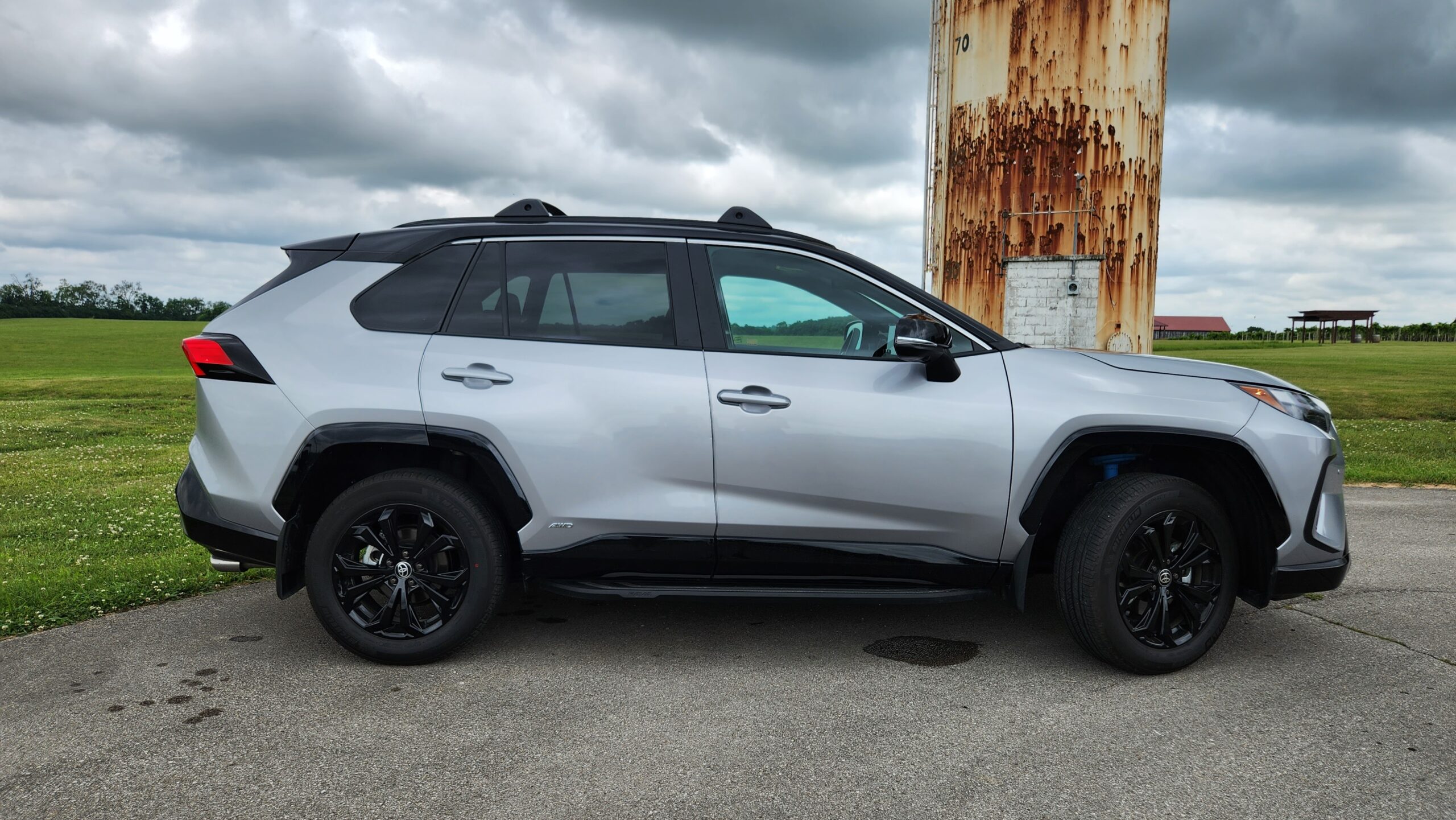
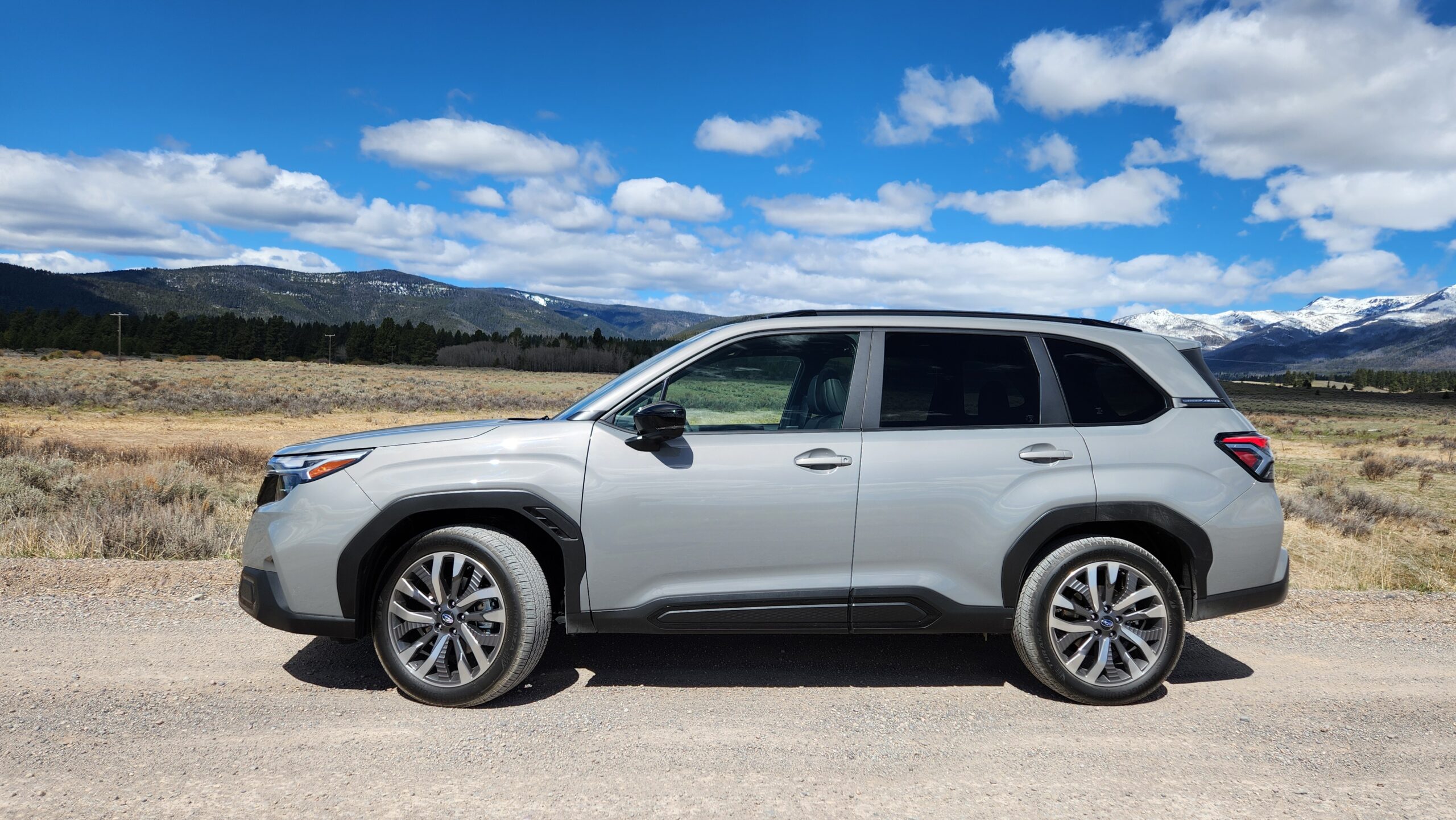
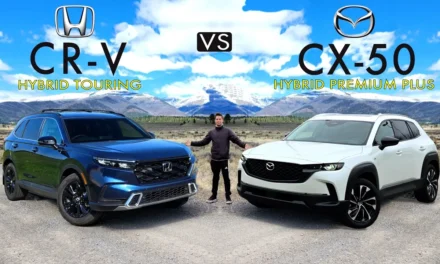
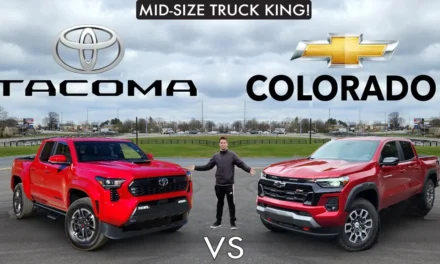
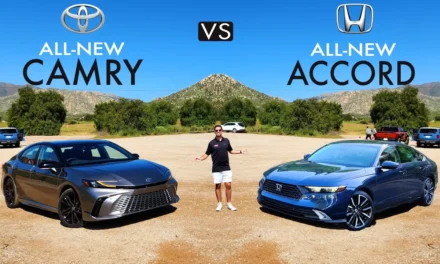
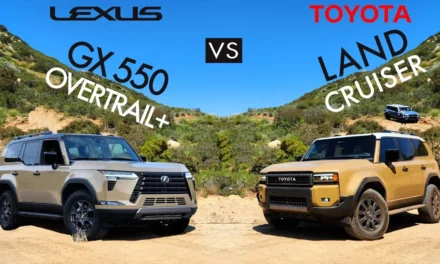



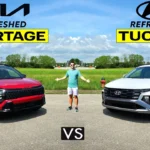


Is there going to the updated drive review for the 2025 Subaru Forester? May 6th release?
What is the updated “noise level” for the 2025 model?
I can’t believe that the 2025 is noisier than the 2023….
Hello! We have a full test drive of the Forester on the YouTube channel right now! And, we are looking forward to getting one at home in KY to review soon as well!